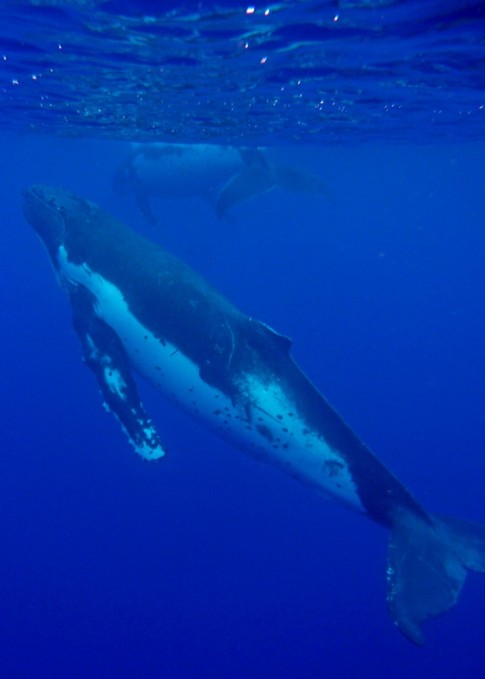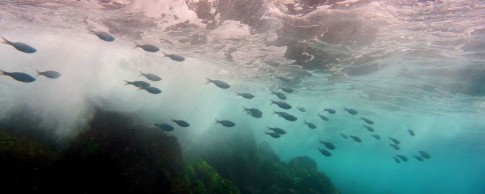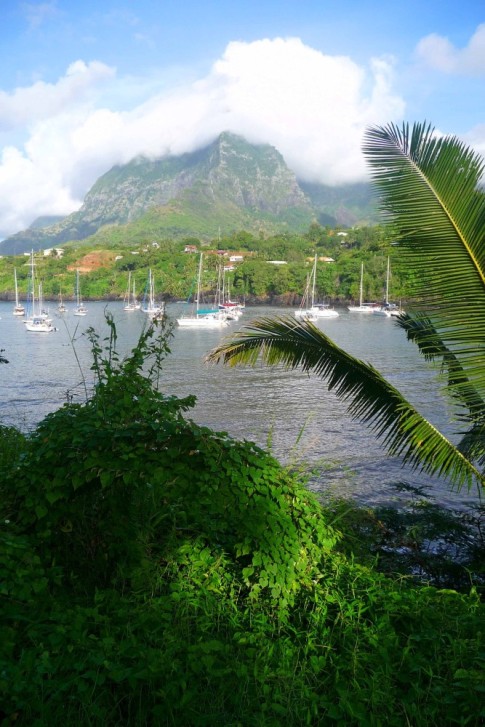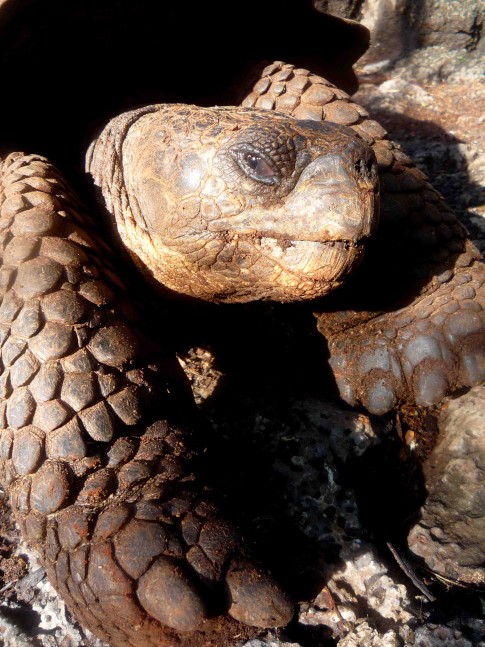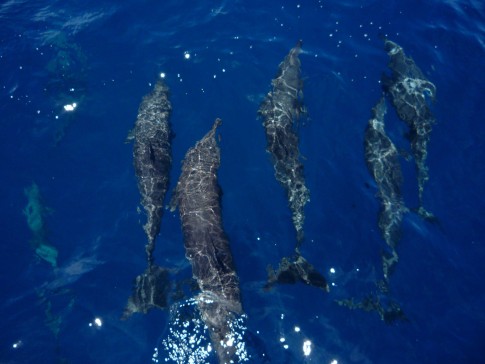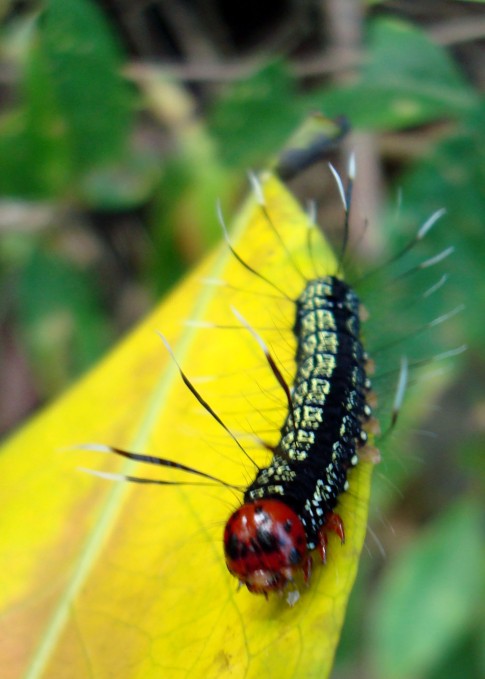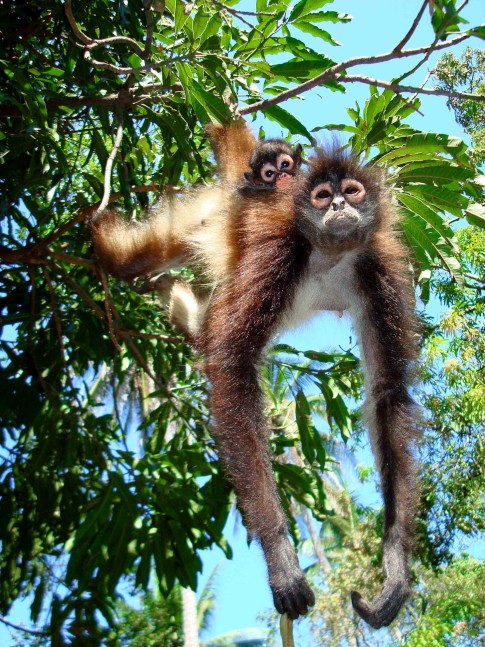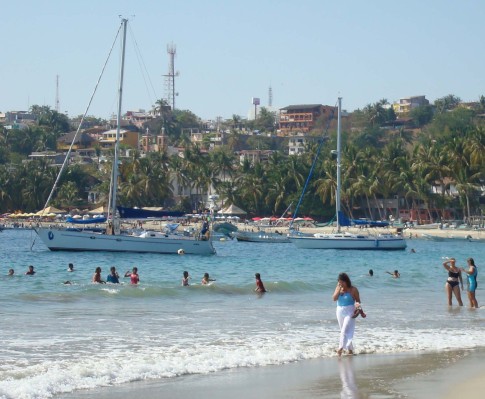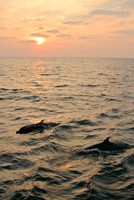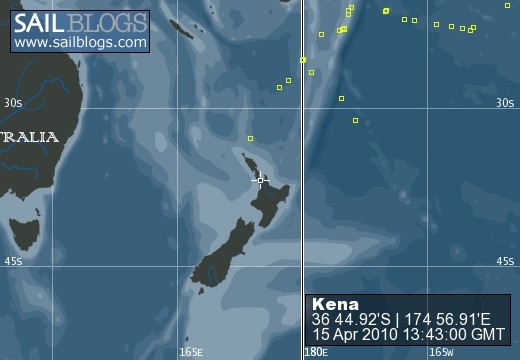
Kena
22 November 2009 | Tutukaka
11 November 2009
10 November 2009
09 November 2009
07 November 2009
07 November 2009
04 November 2009
03 November 2009
01 October 2009
29 September 2009
05 September 2009 | Nuku'alofa
27 August 2009
27 August 2009
23 August 2009
16 August 2009
14 August 2009
12 August 2009
09 August 2009
08 August 2009
08 August 2009
Day 10 - A Mystery Demystified?
08 April 2009
Roger
Trip Log 1458 Nautical miles.
Morning body count: 54 flying fish, 0 squid.
Small rain clouds (baby squalls?) developed in late morning and we received a boat wash and some increased winds. However, this made the seas confused again, so we actually slowed down. It took all afternoon for things to settle back down again, and now it appears the wind is dropping a little from yesterday and this morning.
Still... we did 175 nautical miles over the last 24 hours, which is definitely a record for Kena. Now we need to beat it! I don't think that will happen in the next 24 hours, however.
We have just under 2200 miles to go, which is the length of the Atlantic crossing that Bruce and I did with Bob and Jack on Patience in 1999.
There was one mahi mahi on the line today.
And... from sister Joline, here is the explanation for the appearance of squid on the deck. Thanks, Joline.
Thought you might be interested in this - Joline from - www.susanscott.net/Oceanwatch2002/jan04-02.htm
A few years ago, I mentioned flying squid in a column, and another reader wrote, "Not to be critical, but didn't you mean flying fish?"
No, there really are flying squid. During an offshore voyage once, we once found a flying squid lying on the 6-foot-high deck of our sailboat. That might not sound like much of a jump, but this squid was only about an inch long. Flying squid have been found on ship decks 12 feet above the water's surface.
The squids that make such leaps belong to the squid family Onycoteuthidae.
Members of this group have long narrow bodies and such powerful funnels they can shoot from the water like little rockets.
Actually, squids don't fly any more than flying fish fly. They glide. Both these creatures burst from the water at speed and then soar on aerodynamic fins.
Squids are the speed demons of marine invertebrates, reaching rates of 24 mph. Such a burst of speed is called escape swimming and usually occurs when a predator is about to eat the squid.
During less stressful moments, squids can hover, cruise slowly and swim in precise directions.
They do all this using their multipurpose mantle, the thick cloak of muscle surrounding squid bodies. For a squid, its mantle is everything. It protects the soft body organs, creates water flow for respiration and is the organ of jet propulsion.
Here's how it works. Between the squid's mantle and its body is a space, or cavity, containing gills. The squid opens the top of its mantle (around the neck) and inhales water into the space. To exhale, the muscular mantle contracts. This closes the top opening and forces water out through a tube called the funnel, located under the head.
The squid can move its funnel, enabling the creature to swim in all directions. Small triangular fins on the outside of the mantle stabilize the squid and fine-tune its course. These fins can also propel the animal slowly.
When the squid needs speed, it contracts its mantle strongly, pushing water out the funnel with great force. Bending the funnel backward causes the squid to dart forward so it can grab prey. But when the funnel points forward and straight, the squid shoots backward like a tiny torpedo.
All squids dart with some speed, but the flying squids are champs. Their superstrong mantles, dartlike bodies and gliding-style fins make them able to clear the water and "fly" away from whatever is chasing them beneath.
Unfortunately, there is often something chasing them from above, too. The seabirds are up there, cruising over the water in constant search of food.
So just when the poor squid escapes the jaws of a tuna by bursting from the water, it gets plucked from the air by an albatross. But that's nature.
Morning body count: 54 flying fish, 0 squid.
Small rain clouds (baby squalls?) developed in late morning and we received a boat wash and some increased winds. However, this made the seas confused again, so we actually slowed down. It took all afternoon for things to settle back down again, and now it appears the wind is dropping a little from yesterday and this morning.
Still... we did 175 nautical miles over the last 24 hours, which is definitely a record for Kena. Now we need to beat it! I don't think that will happen in the next 24 hours, however.
We have just under 2200 miles to go, which is the length of the Atlantic crossing that Bruce and I did with Bob and Jack on Patience in 1999.
There was one mahi mahi on the line today.
And... from sister Joline, here is the explanation for the appearance of squid on the deck. Thanks, Joline.
Thought you might be interested in this - Joline from - www.susanscott.net/Oceanwatch2002/jan04-02.htm
A few years ago, I mentioned flying squid in a column, and another reader wrote, "Not to be critical, but didn't you mean flying fish?"
No, there really are flying squid. During an offshore voyage once, we once found a flying squid lying on the 6-foot-high deck of our sailboat. That might not sound like much of a jump, but this squid was only about an inch long. Flying squid have been found on ship decks 12 feet above the water's surface.
The squids that make such leaps belong to the squid family Onycoteuthidae.
Members of this group have long narrow bodies and such powerful funnels they can shoot from the water like little rockets.
Actually, squids don't fly any more than flying fish fly. They glide. Both these creatures burst from the water at speed and then soar on aerodynamic fins.
Squids are the speed demons of marine invertebrates, reaching rates of 24 mph. Such a burst of speed is called escape swimming and usually occurs when a predator is about to eat the squid.
During less stressful moments, squids can hover, cruise slowly and swim in precise directions.
They do all this using their multipurpose mantle, the thick cloak of muscle surrounding squid bodies. For a squid, its mantle is everything. It protects the soft body organs, creates water flow for respiration and is the organ of jet propulsion.
Here's how it works. Between the squid's mantle and its body is a space, or cavity, containing gills. The squid opens the top of its mantle (around the neck) and inhales water into the space. To exhale, the muscular mantle contracts. This closes the top opening and forces water out through a tube called the funnel, located under the head.
The squid can move its funnel, enabling the creature to swim in all directions. Small triangular fins on the outside of the mantle stabilize the squid and fine-tune its course. These fins can also propel the animal slowly.
When the squid needs speed, it contracts its mantle strongly, pushing water out the funnel with great force. Bending the funnel backward causes the squid to dart forward so it can grab prey. But when the funnel points forward and straight, the squid shoots backward like a tiny torpedo.
All squids dart with some speed, but the flying squids are champs. Their superstrong mantles, dartlike bodies and gliding-style fins make them able to clear the water and "fly" away from whatever is chasing them beneath.
Unfortunately, there is often something chasing them from above, too. The seabirds are up there, cruising over the water in constant search of food.
So just when the poor squid escapes the jaws of a tuna by bursting from the water, it gets plucked from the air by an albatross. But that's nature.
Comments
| Vessel Name: | Kena |
| Vessel Make/Model: | Ganley Pacemaker 40 |
| Hailing Port: | Tutukaka, New Zealand |
| Crew: | Roger, Sally, Tane, Hunters all |
| About: | The Hunter family: Roger, originally from Tutukaka, New Zealand Sally, from Tasmania, Australia and Tane is from New Mexico. |
| Extra: | This leg of the trip is from Puerto Lucia, Ecuador to New Zealand. |
Kena's Photos - Main
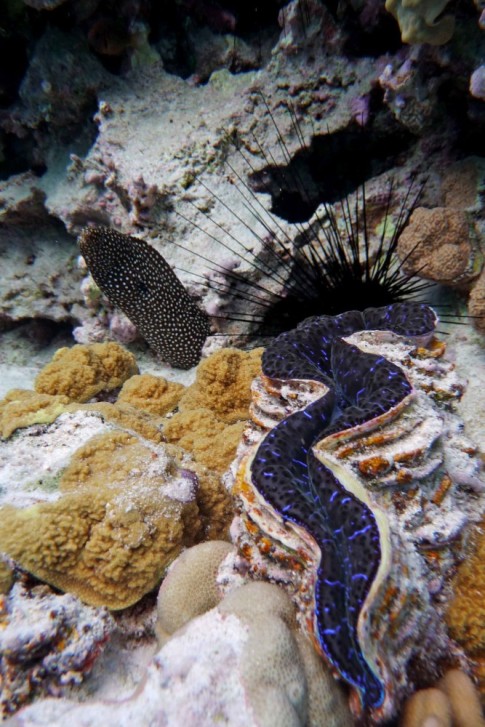 |
A few picks of Roratonga, where we picked up Tomas, and of the incredible Beveridge Reef
20 Photos
Created 1 September 2009
|
 |
Our adventure in the islands of Tahaa and Raiatea in The Society Islands
18 Photos
Created 5 August 2009
|
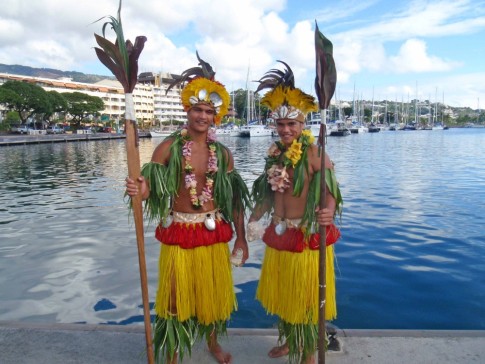 |
The Sailing Rendezvous in Tahiti and Moorea, plus a little of Huahine
35 Photos
Created 5 August 2009
|
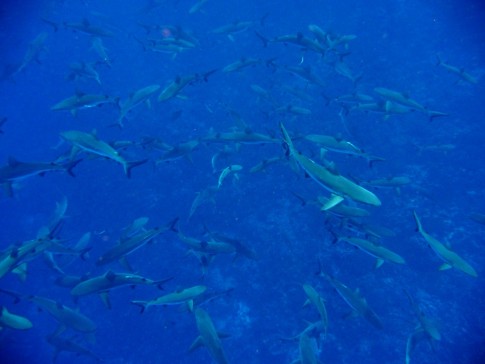 |
Our journey through the coral atolls of the Tuamotus in French Polynesia
65 Photos
Created 19 June 2009
|
S/V Kena
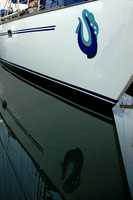
Who: Roger, Sally, Tane, Hunters all
Port: Tutukaka, New Zealand
